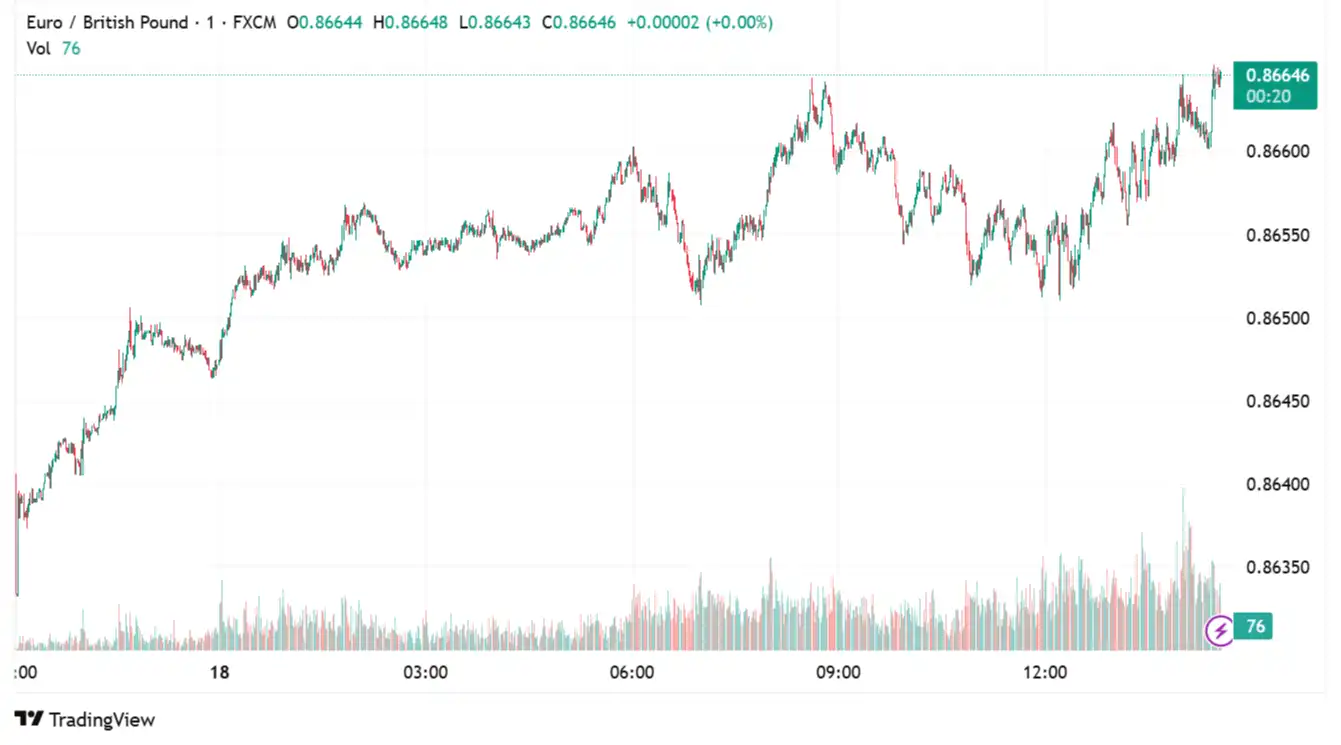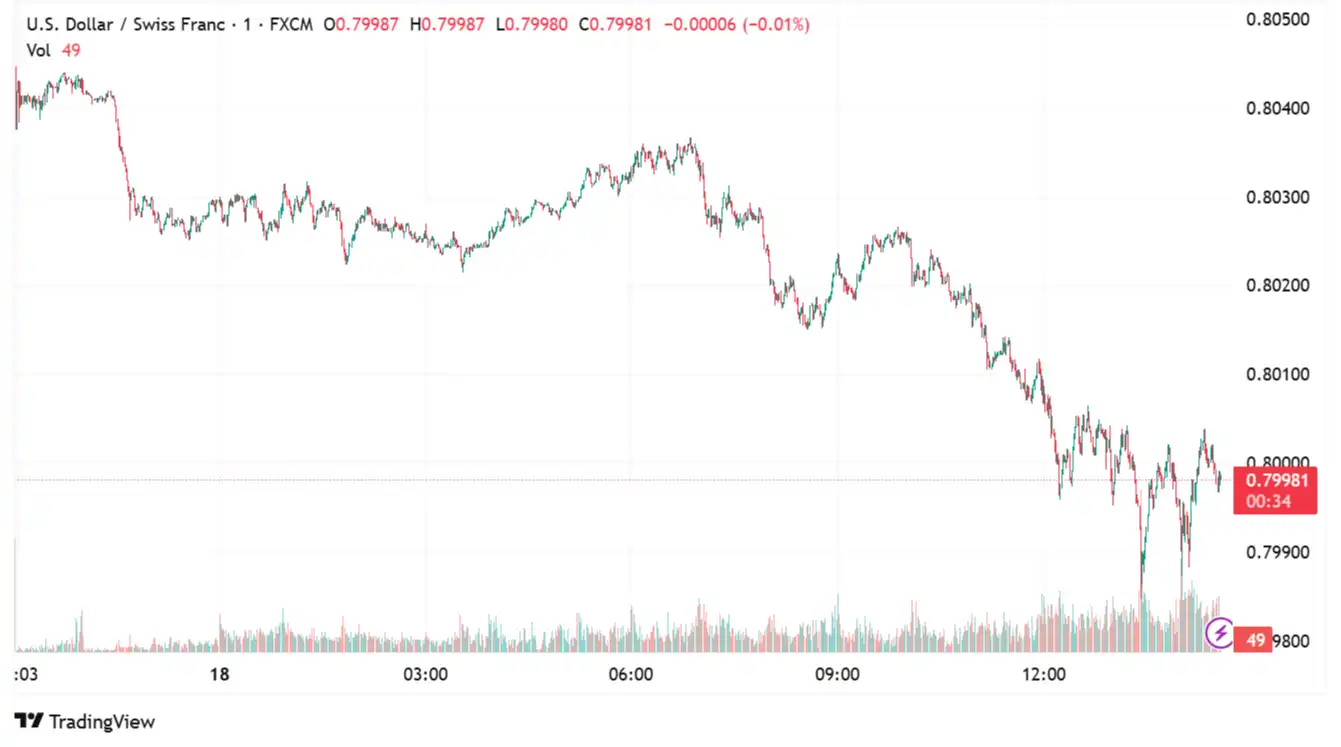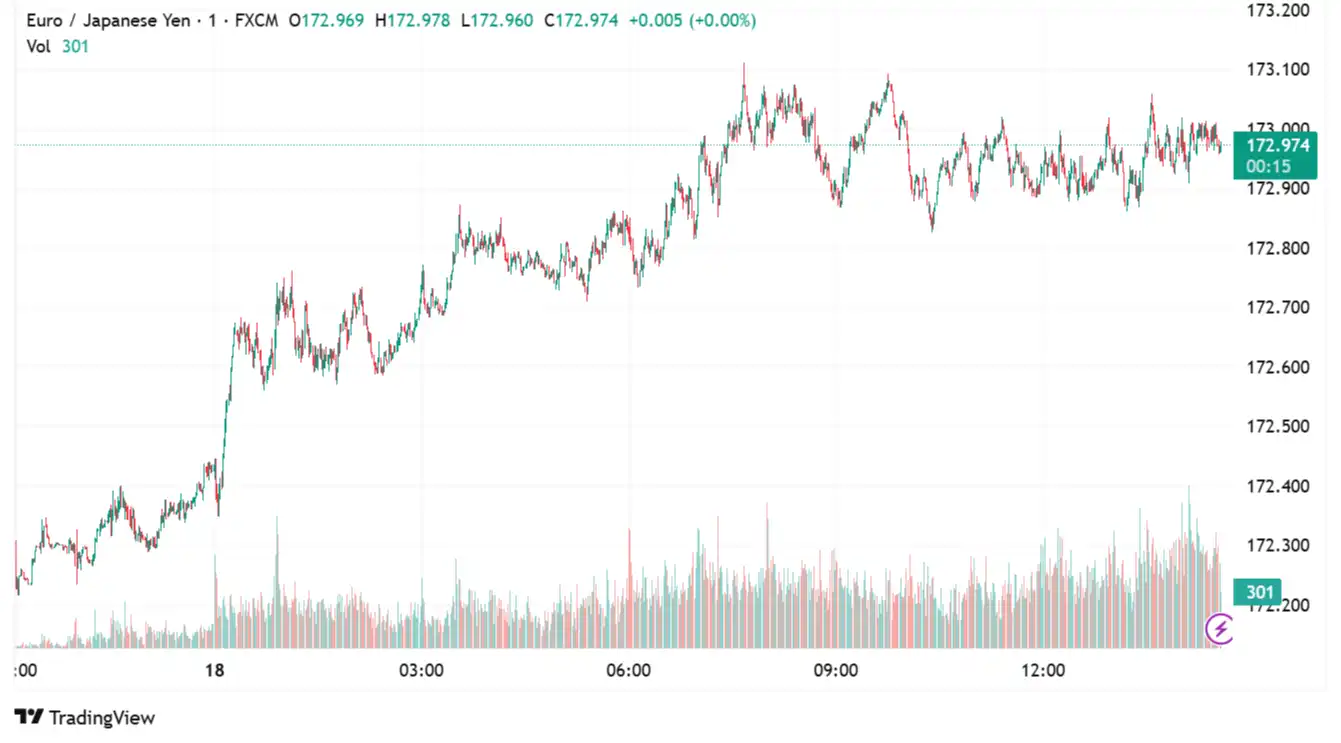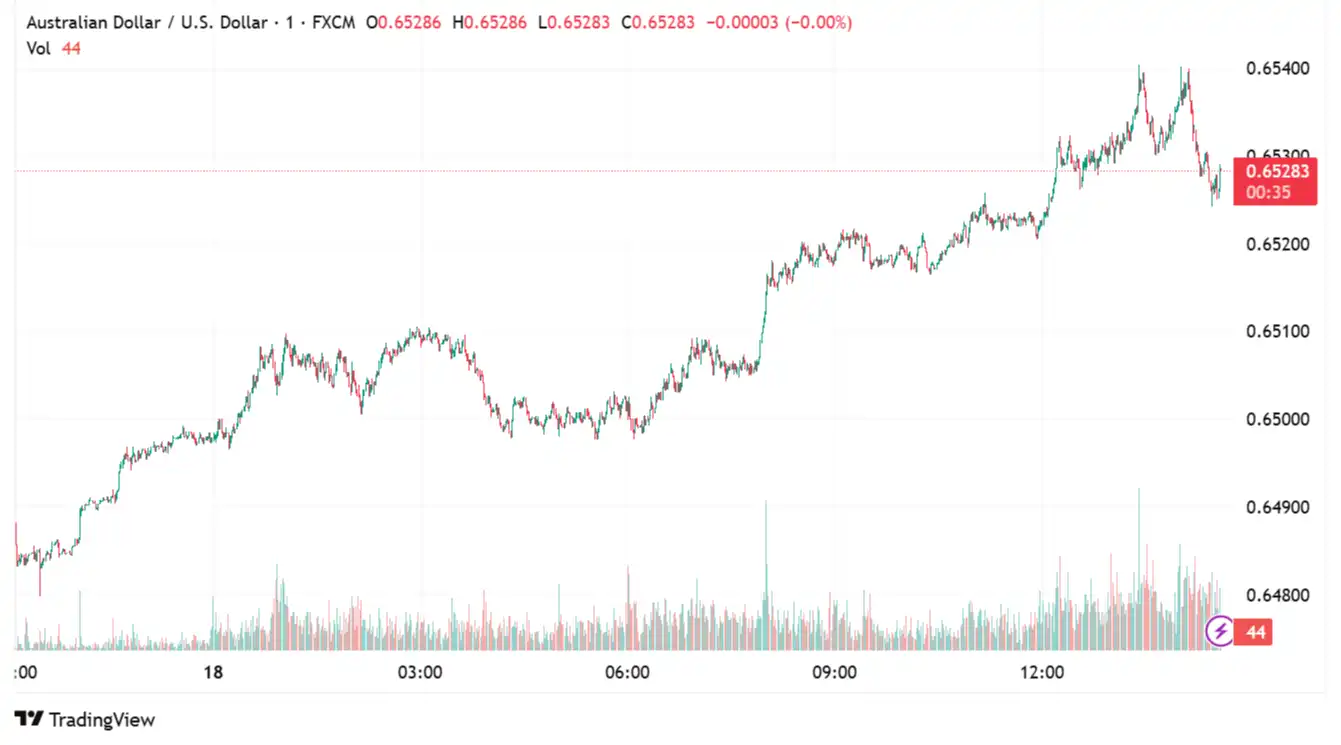EUR/GBP climbed to near 0.8662, following the release of the UK employment report. The United Kingdom's (UK) ILO unemployment rate rose to 4.7% in the three months to May, up from 4.6% in the quarter to April, according to data published by the Office for National Statistics (ONS) on Thursday. The figure exceeded market expectations of 4.6%. Additional details from the report showed that the number of people claiming jobless benefits increased by 25.9K in June, compared with a revised increase of 15.3K in May, surpassing the expected 17.9K. Employment change data stood at 134K in May, up from 89K in April. Meanwhile, average earnings excluding bonuses increased by 5.0% over the three months year-over-year (3M YoY) in May, compared to a revised 5.3% growth previously reported. Market forecasts had anticipated a 4.9% rise. Another measure of wage inflation, average earnings including bonuses, increased by 5.0% in the same period, following a revised 5.4% in the quarter through April, which aligns with the estimate of 5.0%. Signs of rising inflationary pressure should encourage the BoE to maintain a tight monetary policy. However, the UK central bank may need to carefully adjust its tone when discussing interest rates in the August meeting, as inflation increases and the labour market cools.
On the other hand, optimism around the US-EU trade deal continues to wobble the shared currency. Moreover, market anticipation around the European Central Bank's (ECB) monetary policy outlook may lend support to the euro. ECB President Christine Lagarde stated that the central bank is in a "good place" to navigate any challenges to economic growth and inflation that may arise. However, there's less of a consensus beyond the summer. Traders see a less than 50% possibility of a reduction in September. A rate cut is almost fully priced by year-end. The euro area's annual inflation rate was 2.0% in June 2025, up from 1.9% in May. German Producer Price Index (PPI) data released on Friday showed a 0.1% increase in inflation in June, slightly above the 0% market consensus, after a 0.2% decline in May. Year-on-year, however, the PPI shrank by 1.3%, beyond May's 1.2% fall, extending the deflationary trend for the fourth consecutive month.
Today's German Producer Price Index (PPI) and the Eurozone Current Account will influence the EUR/GBP exchange rate.

USD/CHF Tumbles on Upbeat US Economic Data
USD/CHF struggled near 0.8018 as ongoing trade tensions and uncertainty about Federal Reserve (Fed) policies increased safe-haven demand, boosting the Swiss Franc (CHF). Switzerland's trade surplus expanded to CHF 4.3 billion in June, almost doubling from CHF 2.2 billion in May. Exports increased by 8.6% month-over-month to CHF 23 billion, while imports dropped 1.5% to CHF 18.7 billion. Traders anticipate that the Swiss National Bank (SNB) may delay further monetary easing after the recent Swiss inflation report for June. Earlier this month, the annual Swiss Consumer Price Index (CPI) rose slightly by 0.1%, with the monthly CPI increasing by 0.2%. SNB officials are expected to keep interest rates steady at 0% in September, with many analysts predicting it will remain unchanged through 2026.
On the greenback front, concerns about the US fiscal and debt outlook, as well as the Fed's independence, combined with the economic impact of US President Donald Trump's tariff policies, could weigh on the US dollar. A US Department of Labour (DOL) report released on Thursday shows that initial claims for unemployment insurance dropped to 221,000 for the week ending July 12, falling short of initial estimates and the previous week's revised total of 228 (from 227,000). The report also indicated a seasonally adjusted insured unemployment rate of 1.3%. The four-week moving average declined by 6,250 to 229.5 compared to last week's revised average. Continuing Jobless Claims increased by 2,000, reaching 1.956 million for the week ending July 5. Meanwhile, US retail sales grew by 0.6% in June to $720.1 billion, according to the US Census Bureau. This rise followed a 0.9% decline in May and exceeded market expectations of a 0.1% increase. Year-over-year, retail sales grew 3.9% in June, up from 3.3% in May.
Fed Governor Christopher Waller reiterated his support for lowering interest rates in the upcoming policy meeting, citing economic and employment concerns, while assuring that the effects of tariffs will be limited and diminish next year. "The Fed should reduce interest rates by 25 basis points at the July meeting as increasing risks to the economy and jobs support easing the policy rate," Waller stated on Thursday. Additionally, the US Commerce Department announced on Friday that it will implement preliminary anti-dumping duties on Chinese graphite imports, crucial for electric vehicle batteries, after determining these materials had been unfairly subsidised. The department published the tentative 93.5% anti-dumping duties on Thursday, with a final decision expected by December 5.
In today's session, University of Michigan Consumer Sentiment, US Building Permits and Housing Starts will influence the USD/CHF exchange rate.

EUR/JPY Buoyed Following Japan's National CPI Data
EUR/JPY gained ground near 173.05, following the release of Japan's National CPI data. On Friday, Japan's Statistics Bureau released the latest inflation figures, showing that the National CPI rose by 3.3% YoY in June, down from the previous reading of 3.5%. Additional details reveal that the National CPI excluding fresh food stood at 3.3% YoY in June, compared to 3.7% previously. The figure was in line with market expectations. CPI excluding fresh food and energy increased by 3.4% YoY in June, up from 3.3% earlier. Investors now believe that the Bank of Japan (BoJ) is unlikely to raise interest rates this year due to concerns about the economic impact of increased US tariffs, which is weakening the safe-haven JPY. Additionally, Japan's House of Councillors elections are scheduled for Sunday, July 20. These elections are a critical mid‑term test for Prime Minister Shigeru Ishiba's coalition, formed by the Liberal Democratic Party (LDP) and Komeito. Recent polls indicate that the fragile minority government may lose its majority, raising the risk of political instability and increasing concerns over debt, as opposition parties call for higher spending and tax cuts. Internationally, Japan faces difficulties in securing a trade deal with the US, which could further complicate the BoJ's efforts to normalise policy. This ongoing uncertainty continues to weaken the Japanese Yen despite positive market sentiment.
On the Euro front, the market seems confident that the European Central Bank (ECB) is expected to delay its final interest-rate cut until December, strengthening the shared currency. ECB President Christine Lagarde mentioned that the central bank is in a "good place" to handle potential challenges to economic growth and inflation. However, beyond summer, there is less agreement. Traders estimate less than a 50% chance of a rate cut in September, but almost all expect a rate cut by the end of the year. Chancellor of Germany Friedrich Merz issued warning signs on Thursday, cautioning that European Union (EU) plans to bolster budgets through new or increased corporate taxation schemes will likely face resistance from the German contingent.
In the Eurozone, German Producer Price Index (PPI) data released on Friday showed a 0.1% increase in inflation in June, slightly above the 0% market consensus, following a 0.2% decline in May. Year-on-year, however, the PPI has decreased by 1.3%, exceeding May's 1.2% fall and continuing the deflationary trend for the fourth consecutive month. The headline HICP rose slightly from 1.9% in May to 2.0%, while the core HICP remained steady at 2.3%, aligning with market expectations.
Broader market sentiment around Japan's upper house election and the ongoing tariff conflicts will influence the EUR/JPY exchange rate.

AUD/USD Rebounds Ahead of UoM Consumer Sentiment
AUD/USD recovered near 0.6516, following dovish remarks from the Federal Reserve (Fed) officials and the release of robust US retail sales data. San Francisco Fed President Mary Daly considers two rate cuts this year a "reasonable" expectation, but warns against delaying too long. She explained that rates will eventually stabilise at 3% or higher, surpassing the pre-pandemic neutral rate. Fed Governor Christopher Waller, speaking late Thursday, expressed his belief that the Fed should consider lowering interest rates at the July meeting due to increasing economic risks. He also warned that postponing cuts could necessitate more aggressive measures later. Conversely, FOMC Governor Adriana Kugler argued that the Fed should hold steady on rate cuts "for some time," as tariffs from the Trump administration are beginning to impact consumer prices. Kugler emphasised that maintaining a restrictive monetary policy is crucial to prevent inflation expectations from rising. Furthermore, US Retail Sales increased by 0.6% month-over-month in June, compared to -0.9% previously. This figure surpassed the market consensus of 0.1%. Meanwhile, the annual Retail Sales rose by 3.9%, up from 3.3% in May.
On the other hand, recent cooling of labour market expectations has led traders to increase bets on interest rate cuts by the Reserve Bank of Australia (RBA) in the upcoming August policy meeting, bolstering the Aussie. The employment report released on Thursday showed that the Unemployment Rate rose to 4.3%, exceeding expectations and the previous figure of 4.1%. The number of new workers added in June was 2,000, while economists had expected 20,000 new job-seekers to be hired. In May, the Australian labour force shrank by 1,100. Australia's Westpac Consumer Confidence on Tuesday, which climbed 0.6% month-over-month in July, followed a 0.5% gain in June.
On Friday, China's Commerce Minister Wang Wentao said that the economic and trade relations with the United States have endured storms but remain important to each other. Wentao also stated that mutual benefit is the essence of US-China commercial ties. He added that the Geneva agreement and the London framework have effectively stabilised commercial relations and cooled down tensions. China's economy grew at an annual rate of 5.2% in the second quarter, slightly below the 5.4% in the first quarter and the expected 5.1%. Meanwhile, the Chinese Gross Domestic Product (GDP) increased by 1.1% in Q2, beating the market consensus of a 0.9% rise. Additionally, Retail Sales rose by 4.8% Year-on-Year in June, below the 5.6% forecast and the 6.4% figure in the previous period, while Industrial Production reached 6.8%, ahead of the 5.6% expectation.
In today's session, investors will closely monitor the University of Michigan Consumer Sentiment, Building Permits, and Housing Starts for fresh insights on the AUD/USD exchange rate.

Stay Ahead in the Currency Game
Whether you're a daily FX trader or handle international transactions regularly, our 'Currency Pulse' newsletter delivers the news you need to make more informed decisions. Receive concise updates and in-depth insights directly in your LinkedIn feed.
Subscribe to 'Currency Pulse' now and never miss a beat in the currency markets!
Ready to act on today’s insights? Get a free quote or give us a call on: +44 (0)20 7740 0000 to connect with a dedicated portfolio manager for tailored support.
Important Disclaimer: This blog is for informational purposes only and should not be considered financial advice. Currency Solutions does not take into account the investment objectives, financial situation, or specific needs of any individual readers. We do not endorse or recommend any specific financial strategies, products, or services mentioned in this content. All information is provided “as is” without any representations or warranties, express or implied, regarding its accuracy, completeness, or timeliness.




